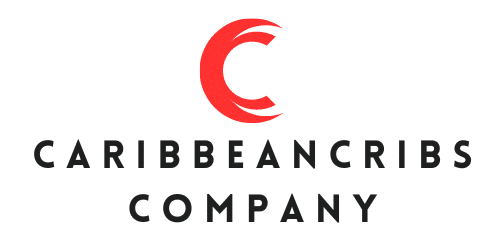How Is Technology Optimizing In-Store Retail Logistics for Faster Restocking?

In today’s fast-paced and competitive retail world, effective inventory management and restocking processes are crucial. As retailers, managing your store’s inventory is a balancing act that demands finesse and precision. Too little stock leads to missed sales opportunities, while too much can result in dead stock and unnecessary costs. Traditionally, managing this balance has been a time-consuming and complex task. However, thanks to technological advancements, retailers can now optimize their in-store logistics and take their inventory management processes to the next level. This article will explore how technology such as data analytics, RFID systems, and efficient supply chain management aids in accelerating the restocking process in the retail industry.
Leveraging Data Analytics for Inventory Management
As an opening note, it’s essential to understand the role of data analytics in inventory management. In a retail store, every customer interaction and transaction generates data – data that holds valuable insights about product demand and sales patterns. By mining this data, you can make informed decisions about your inventory and drive your restocking efforts in a direction that aligns with customer demand.
A lire en complément : Top no-code front end builder tools to try in 2024
Modern inventory management systems harness technology to analyze sales data and generate real-time reports. These reports detail which products are selling fast, which are slow-moving, and even predict future sales trends based on historical data. This allows you to maintain an optimal level of stock, reduce the risk of overstocking or understocking, and ultimately, improve your store’s operational efficiency.
Moreover, data analytics can identify the best times to restock certain products, enabling you to manage your operations and workforce more efficiently. For instance, non-peak hours might be the best time for restocking high-demand items to ensure availability when customer traffic is highest.
A voir aussi : Master web security with real-world simulations and labs
RFID Systems for Accurate Stock Taking
RFID (Radio Frequency Identification) is an innovative technology that is revolutionizing the inventory management process in retail. Traditional methods of stock taking, such as manual counting or barcoding, are often time-consuming and prone to human error. RFID systems, on the other hand, enable you to track your entire inventory accurately and efficiently.
RFID tags are attached to each product, and these tags emit radio signals that can be detected by RFID readers. This allows for real-time tracking of products from the moment they enter your store until they are sold. Therefore, you always have an accurate count of your inventory at any given time.
RFID systems also significantly speed up the restocking process. The technology can quickly identify which items are low in stock or out of stock, thereby enabling timely restocking of these items. This not only minimizes the chances of stock-outs and lost sales but also contributes to improved customer satisfaction as products are always available when needed.
Streamlining Supply Chain Processes with Technology
The supply chain is an integral part of the retail ecosystem as it directly impacts inventory and, consequently, the restocking process. Inefficient supply chain processes can lead to delayed deliveries, inaccurate inventory counts, and ultimately, unsatisfied customers.
Technological advancements are enabling retailers to streamline their supply chain processes. From automated ordering systems that trigger orders based on inventory levels, to GPS-enabled delivery tracking that provides real-time information about shipments, technology is making the supply chain more transparent and efficient.
Automated ordering systems eliminate the need for manual reordering, saving significant time and reducing the risk of human error. Plus, with real-time tracking of shipments, you can predict exactly when new stock will arrive and plan your restocking efforts accordingly. This way, the time between a product going out of stock and being restocked is minimized, ensuring that customers always find what they need in your store.
Enhancing Customer Experience through Efficient Operations
At the heart of retail operations is the customer experience. An efficient restocking process not only ensures that products are always available, but it also contributes to a seamless and satisfying shopping experience for the customer.
Technology plays a crucial role in optimizing in-store operations for improved customer experience. For example, mobile devices equipped with inventory management apps allow your staff to quickly check product availability, locate items in the store, and even process sales right where the customer is shopping. This eliminates the need for customers to wait in long checkout lines, thereby enhancing their shopping experience and building their loyalty towards your store.
Furthermore, digital signage and interactive kiosks can provide customers with product information, suggest related products, and even guide them to the product’s location in the store. This empowers customers to make informed purchasing decisions and improves their overall shopping experience.
The retail industry is quickly embracing technological advancements to optimize in-store logistics and accelerate the restocking process. As a result, not only are retailers able to manage their inventory more effectively, but they are also enhancing the shopping experience they offer their customers. The future of retail logistics, undoubtedly, is steeped in technology.
The Role of Demand Forecasting in Inventory Management
Every retailer’s dream is to have a crystal ball that predicts future sales, and demand forecasting technology is the next best thing. In the context of inventory management, demand forecasting refers to the process of estimating the quantity of a product that consumers will purchase in the future.
This technology enables retailers to base their inventory restocking strategy on detailed insights about future sales rather than relying solely on past sales data. Advanced algorithms take into account numerous factors including seasonality, market trends, promotional activities, and more. This broad perspective allows for a more precise forecast, which in turn enables retailers to maintain optimal inventory levels.
With accurate demand forecasting, retailers can plan for peaks and troughs in demand, thereby optimizing their inventory restocking process. It helps prevent situations where a retailer either runs out of stock or ends up with excess inventory, both of which can lead to lost sales and reduced profits. Demand forecasting technology is especially valuable during peak seasons like holidays, where it can help retailers prepare for the surge in demand and make the most out of the sales opportunity.
Additionally, this technology can also contribute to improving the customer experience. When you have the right products in the right quantity at the right time, you are essentially meeting your customers’ expectations consistently. This leads to increased customer satisfaction and loyalty, which are crucial for the success of any retail business.
Aiding Order Fulfillment with Technology
Order fulfillment refers to the complete process from receiving an order to delivering the goods to the customer. This involves several steps, including picking, packing, shipping, and delivery. In the context of retail, order fulfillment is crucial as it directly affects the availability of products in the store.
One way technology is optimizing order fulfillment is through the use of automated picking systems. These systems use advanced robotics and AI to pick items from your inventory, significantly reducing the time and labor needed for this task. Moreover, these systems ensure a high level of inventory accuracy, reducing the chances of picking errors that can lead to stock discrepancies.
Technology is also revolutionizing the shipping and delivery aspects of order fulfillment. For instance, retailers are now able to use GPS and IoT devices to track their shipments in real-time. This gives them a clear picture of when the new stock will arrive and allows them to plan their restocking efforts accordingly.
Furthermore, the use of drones for order delivery is becoming more common in the retail industry. Drones can deliver goods faster and more efficiently, especially in hard-to-reach areas. This can significantly reduce the time between an order being placed and the product being available in the store.
Conclusion: The Future is Now
From data analytics and RFID technology to demand forecasting and automated order fulfillment, technology is making waves in the retail industry. It is enabling retailers to optimize their inventory management, streamline their supply chain, and enhance customer service. The result is faster restocking, less wastage, and a better shopping experience for customers.
In today’s digital age, leveraging these technologies is no longer a choice but a necessity for retailers who want to stay competitive. As technology continues to evolve, it is expected to bring even more exciting opportunities for optimizing in-store retail logistics.
The message is clear – for retailers who aim to provide seamless shopping experiences while maintaining efficient operations, embracing technology is the way forward. After all, in the fast-paced world of retail, those who adapt quickest will be the ones who thrive.
